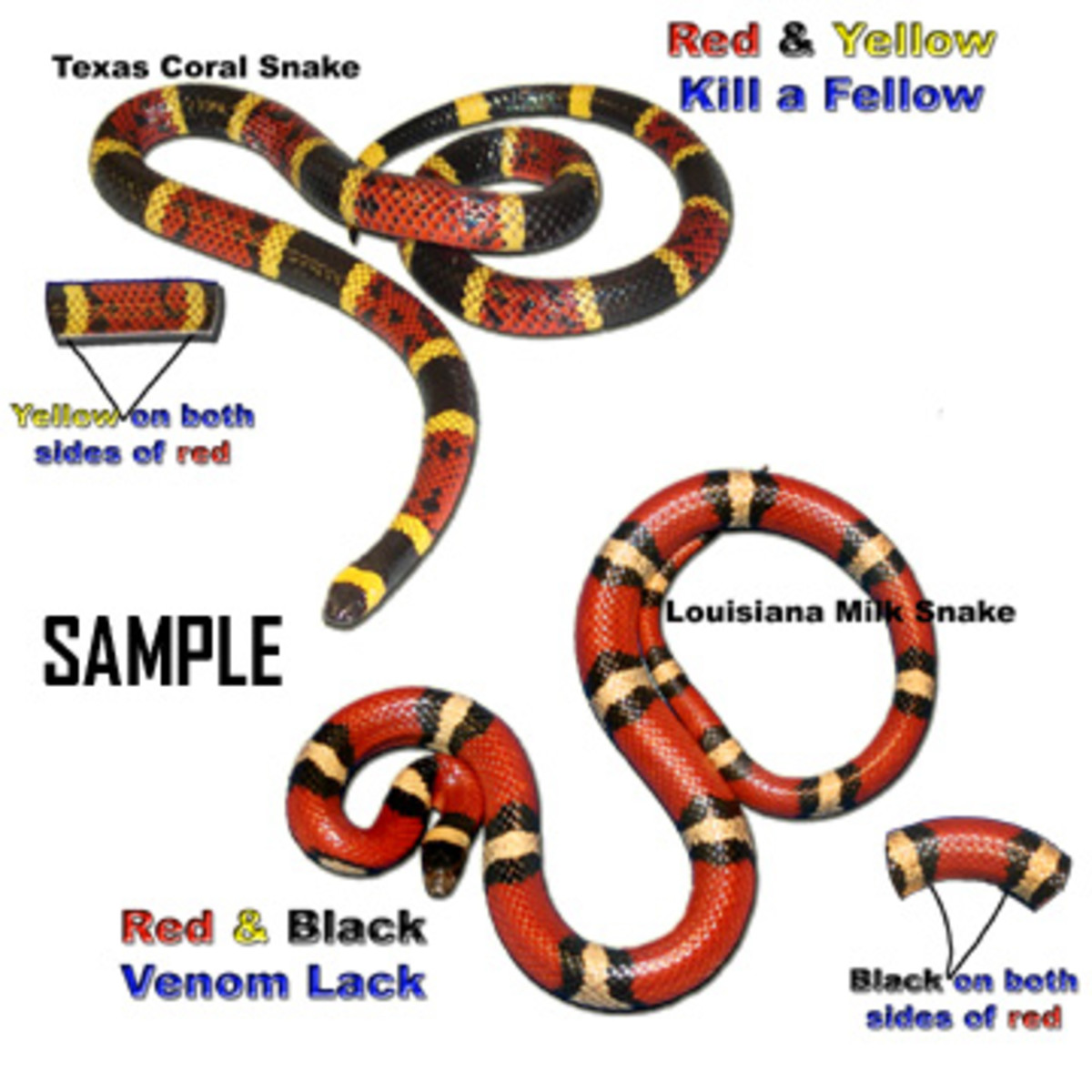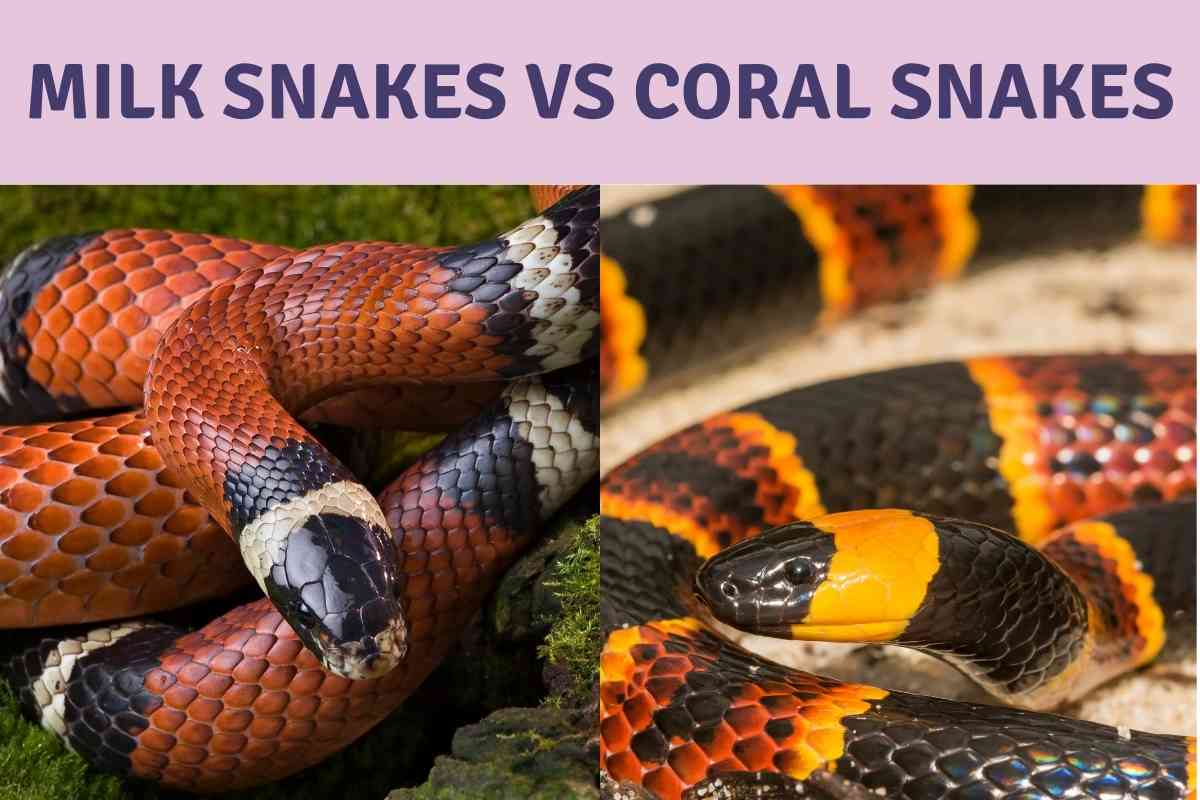
How to Tell the Difference Between a Milk Snake and a Coral Snake: A Comprehensive Guide
The red-and-yellow striped pattern of the coral snake and the black-and-red striped pattern of the milk snake are often confused for one another. Although both snakes look similar, they are actually from different species and have distinct characteristics that make them easy to tell apart. In this comprehensive guide, we will explore the differences between the two snakes, their history, and how to safely identify them.
History and Background
The milk snake (Lampropeltis triangulum) is a species of kingsnake that is found throughout North and Central America. The species is the most widely distributed of all the kingsnakes, with over 30 subspecies. Milk snakes are non-venomous and are typically harmless to humans. They feed primarily on small rodents and other reptiles and can grow up to 4 feet in length.
The coral snake (Micrurus fulvius) is a species of venomous elapid snake that is found throughout the southeastern United States. There are two subspecies of coral snakes, the eastern coral snake (Micrurus fulvius fulvius) and the Texas coral snake (Micrurus fulvius tenere). Coral snakes are highly venomous and can grow up to 3 feet in length.
Key Concepts and Terminology
One of the main differences between the two snakes is their coloration. Milk snakes have a black-and-red striped pattern, while coral snakes have a red-and-yellow striped pattern. This is often referred to as the “red touches yellow, kill a fellow” rule, which is used to identify coral snakes. Milk snakes also have a white or yellowish belly, while coral snakes have a black belly.
Another difference between the two snakes is their size. Milk snakes can grow up to 4 feet in length, while coral snakes typically only grow up to 3 feet in length. Additionally, milk snakes are non-venomous, while coral snakes are highly venomous.
Current Trends and Developments
The red-and-yellow striped pattern of the coral snake has become a popular trend in fashion, with clothing and accessories featuring the snake’s iconic pattern. The pattern has also become popular in the tattoo industry, with many people getting tattoos of the snake.
Notable Experts or Influencers in the Field
One of the most notable experts in the field of snake identification is herpetologist Dr. Harry W. Greene. Dr. Greene is a professor of ecology and evolutionary biology at Cornell University and is the author of several books on snakes, including Snakes: The Evolution of Mystery in Nature. He is an expert on the identification and behavior of snakes, and has been featured in numerous documentaries and television shows.
Practical Tips or Advice for Readers
The best way to tell the difference between a milk snake and a coral snake is to use the “red touches yellow, kill a fellow” rule. If the snake has a pattern that is red-and-yellow, then it is a coral snake. Additionally, if the snake has a white or yellowish belly, then it is a milk snake. It is important to always use caution when handling any type of snake and to never attempt to pick up a venomous snake.
Conclusion
The milk snake and the coral snake are two species of snakes that are often confused for one another due to their similar coloration. However, there are several key differences between the two snakes that can be used to identify them. The milk snake is non-venomous and has a black-and-red striped pattern and a white or yellowish belly. The coral snake is highly venomous and has a red-and-yellow striped pattern and a black belly. The best way to tell the difference between the two snakes is to use the “red touches yellow, kill a fellow” rule.

Image :
emborapets.com
Detail Insight Video
If you're interested in the theme covered in this article, I recommend viewing the video below. In this video, you'll gain further insights and knowledge on the subject, as well as visual aids of some of the central concepts and concepts covered in the article. You'll also have the opportunity to hear from professionals in the industry and engage with fellow viewers who are interested in the same topic. Whether you're hoping to broaden your knowledge of the subject or simply desire to discover it further, this video is a valuable resource for anyone enthusiastic in acquiring more information. So, if you want to acquire a more comprehensive understanding of the theme, be sure to check out the attached video. It's sure to give you the perspective and knowledge you want to expand your understanding and expertise.
As we conclude, About this topic Tell The Difference Between A Milk Snake And A Coral Snake our hope is that you will find the information presented valuable and useful. We understand that our environment is always changing, and keeping up with the latest developments may be difficult. That's why our mission is to provide our readers with the most content possible. Your feedback is crucial to us, thus please be sure to drop comments in the section below. Thank you for your readership and suggest you to explore other pieces on our website to widen your understanding even more. Thanks for being a valued reader of our community!

Post a Comment for "Tell The Difference Between A Milk Snake And A Coral Snake"